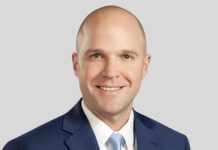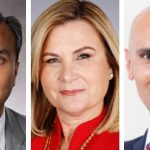Amidst falling inflation, low unemployment rates, and signals from the Federal Reserve about potential interest rate cuts, optimism is growing among forecasters regarding the possibility of the U.S. economy avoiding a recession. Wells Fargo, among the latest to shift its stance, now anticipates a soft landing, diverging from its earlier recession prediction since mid-2022.
While recent economic data continues to be mostly positive, concerns persist, and signs of weakness in the labor market have been highlighted. Wells Fargo economists point to a slowdown in hiring, with only a few industries contributing significantly to recent job gains. Although layoffs remain low, individuals who lose their jobs are encountering increased challenges in securing new employment.
Despite the emerging optimism, economists stress that risks are still prevalent. Factors contributing to recent positivity include the economy's resilience to rising interest rates and a more rapid decline in inflation than anticipated. Policymakers now have additional flexibility; if unemployment were to rise, the Federal Reserve could potentially cut rates to prolong the economic recovery.
However, potential risks and uncertainties persist. Wells Fargo economists caution that the recession risk remains elevated, pointing to eroding buffers that have helped the economy weather challenges. Factors such as dwindling savings, record credit card borrowing, higher mortgage rates impacting the housing market, resumed student loan payments, and cuts to state and local government budgets contribute to the caution.
Economists outline three main ways a recession could still materialize:
The Delayed Slowdown: If the effects of higher interest rates take longer than anticipated to impact the economy, a recession could still occur as businesses and consumers adjust to increased borrowing costs.
The Return of Inflation: Despite a recent cooling of inflation, a resurgence could pose challenges, limiting policymakers' ability to cut rates and potentially forcing them to consider rate hikes.
The Unwelcome Surprise: Unforeseen events, such as disruptions in shipping lanes, geopolitical tensions, or emerging threats like a new coronavirus strain, could upset the delicate balance the Federal Reserve is trying to maintain.
Despite a more optimistic outlook, economists emphasize the Fed's limited margin for error, especially with a slowed economy and heightened inflation. The risks, while appearing more balanced than a year ago, continue to pose challenges for decision-makers navigating the path forward. The delicate balance requires vigilance against potential pitfalls that could impact inflation or demand, underscoring the uncertainties in the economic landscape.























